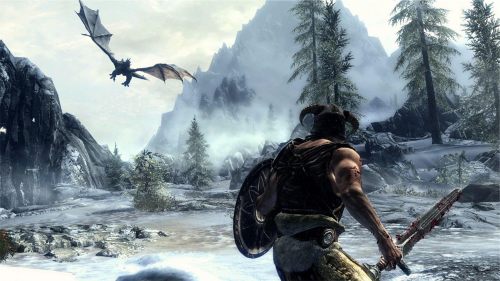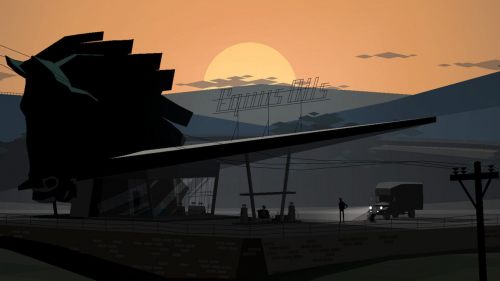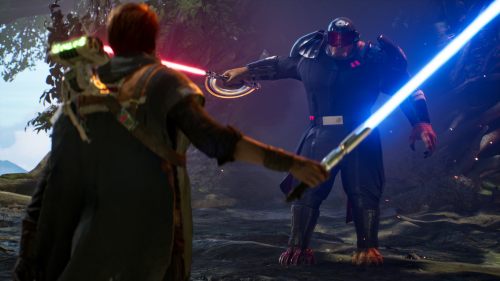THE DIVISION Game Review: Welcome To Trump’s America
Video games are big business nowadays, and right now, the biggest business is Tom Clancy’s The Division. There are a ton of people playing Ubisoft’s open-world online RPG/shooter right now, which is frankly a little bit worrying. Big-time entertainment carries with it cultural responsibility towards the millions of people consuming it, and while The Division is well-made and even clever, it’s rife with theming that skews towards another seemingly-rising cultural force: fascism.
That’s nothing new to video games. Since the dawn of the industry, violence has frequently been a primary mechanic. Likewise, many games have had casually retrograde attitudes towards marginalised groups, largely due to a techbro developer base that the industry has only recently begun to escape. But aside from a laudably diverse main cast, The Division is a political garbage fire, a paean to authoritarianism and brute force that can be chilling to play.
The Division’s basic story will make little sense to anyone but Tom Clancy (who, having died shortly after the game’s announcement, was uninvolved in most of its development). It’s the near future. The world has suffered a devastating plague. Civilisation has broken down, and the US government is in tatters. Luckily, it has a safeguard: an elite force of sleeper agents, somehow trained for this very situation, which operates without rules or limits to “protect what remains” and ensure the continuity of government. This is The Division, and you are one of its agents.
You are a government agent assigned to protect property from poor people.
You do this by killing the poor people.
If The Division were produced in the Cold War, it would have been used as Soviet propaganda. The United States falls, and its government’s remnants attack its poor, hoarding medicine and food for itself? I’d fight against that. But The Division casts the player as The Man. This isn’t a game about trying to survive. It’s an interactive Death Wish 3, all about helping the “right” people and murdering the “wrong” people.
Worse, the game designates its looter enemies by cladding them in hoodies - a generalisation that plays into the same stereotype that killed Trayvon Martin. The eradication of looters is a shockingly tone-deaf philosophical and gameplay pillar of The Division. In the wake of events like Katrina and Ferguson, that could have been topical and thoughtful, but filtered through Clancy-brand authoritarianism, it’s poisonous and irresponsible.
To illustrate: in my very first mission, the game told me to kill some troublemakers. I found them, a pair of faceless hoodies fossicking through some of the game’s many snow-covered trash bags. I shot one dead. The other shouted “they got Alex!” before trying unsuccessfully to escape. (Turns out there’s an enormous Alex population in post-plague New York, now dwindling fast thanks to the Division.) Checking Alex’s body, I found only canned food. On my way back to the safehouse, I approached an NPC on the street, who cried out, “I thought you were helping us,” and literally ran away from me. This is the kind of hero The Division wants you to be. My personal death toll is likely in the thousands by now, yet every time I report back to base, I’m praised for Doing The Right Thing. If this built towards a self-reflective rug-pull or a clever subversion of theme, I’d forgive it, but in a long-term MMO, that ain’t happening.
This isn’t a case of moral grey areas. We’re the good guys, because we’re the ones with the most infrastructure. Might makes right in The Division, and resistance must be crushed.
The Division paints criminals with a broad brush as vermin to be exterminated. More factions are introduced later on whose obliteration is a little more ethically acceptable - like the Cleaners, bent on burning everyone alive to sterilise the city, or the former private military contractors trying to form their own military state (to compete with ours). But then, the Rikers - ex-cons and tragically not clones of Jonathan Frakes - are still ultimately people trying to survive - a tough moral line to walk when you’re gunning down hundreds. Also troubling: although you can help out NPCs the game deems “innocent,” animals (which do not attack you) can only be interacted with through violence. You can shoot the pups of New York, but you cannot pat them - an unforgivable demonstration of the game’s lack of humanity.
Of course, there’s more to a game than just its entire narrative and thematic context. Is it fun to play, ask the gamers? Well, kinda, if you can get past the unpleasant framework - something most gamers will do quite cheerfully.
Broadly speaking, The Division is a cover shooter, but of a more tactical breed than Gears of War. Most combat takes place either in random encounters in the overworld, or in story missions that take place in discrete areas. The story missions are the best content in the game, but the gameplay is always the same: get behind cover, pop out and shoot people, move to a new cover. At least that core mechanic is well-tuned and dynamic. Like a real-time XCOM, The Division demands players position themselves intelligently, with flanking vital in tougher encounters. When using abilities or grenades, the game gives a clear graphic indication of area of effect and the amount of damage done. There’s even a point-to-point roadie run function that seems ripped straight out of XCOM. With good team communication, combat can be really rewarding.
Much like fellow online shooter Destiny, to which comparisons are both inevitable and worthwhile (I don’t see players keeping up with both games at once), much emphasis is placed on character progression. Abilities are upgraded by restoring parts of your base of operations, and are key to success in battle. What’s more, they can be hot-swapped, even mid-mission, eschewing the mandatory class-based specialisation usually found in RPGs. Thus, you can tailor your skills to complement your mission and fireteam. It’s a great decision by Ubisoft, and I wouldn’t be surprised to see such an obvious mechanic pop up elsewhere.
Also like Destiny, The Division has a fetishistic obsession with gear. A good twenty percent of your time (I’m not even kidding) will be spent buying, selling, modding, crafting, or otherwise fiddling with gear, via a cluttered, inconsistent user interface. I won’t even go near the crafting screen, simply because it’s too much work for too little return. Everything in The Division has an upgrade tree, progressing through them is a laborious grind, and the rewards just don’t feel worth it - a game-killer in this genre.
An element of grind familiar to veterans of any Ubisoft open-world game is the cockroach-like proliferation of icons that all but obscure the world map. Collectibles and side quests harass players every few steps or so with blinking, beeping reminders of their presence. Luckily, some of the map’s icons represent friends who also happen to be playing the game. (In an unfathomably bizarre decision, people you’ve blocked (on consoles, at least) show up as “friends” too. What the hell, Ubisoft?!) Playing with friends is what makes The Division work. Your friends’ banter will always be better than the sometimes-grating NPCs’, and the tactical side of gameplay is thrilling when carried out well.
The Division’s shining multiplayer achievement is the Dark Zone, a sealed-off region of Manhattan where chaos reigns. This is where player-vs-player action can happen. I say it “can” happen, because the Dark Zone operates differently to any other PvP system. Upon entering, it looks at first to be simply a higher-difficulty section of the main map. The difference is that other players are also roaming around killing enemies and collecting loot; you can either help them and share in the rewards, or kill them and take their gear for yourself. Harm players, and you get a bounty on your head - but also potentially better shit. The risk-reward balance is quite something.
The ambiguity of other players’ intentions is the Dark Zone’s best feature. It generates super-suspenseful emergent narratives, filled with uneasy alliances, betrayals, and revenge. Extracting loot from the Dark Zone requires calling in a chopper, starting an extraction countdown to which all nearby players are alerted. Things can go horribly wrong in those ninety seconds, as players congregate to either extract their loot via chopper, or extract others’ via bullets. At one point, a friend and I got into a lengthy game of cat and mouse with a pair of dishonourable players. Though exhausting and infuriating, the story that incident created - ending with one of the assholes being chased into a den of high-level enemies - was the game’s most memorable moment so far.
If only The Division’s visual design was so memorable. While its 1:1 recreation of a slice of Manhattan is achieved with stunning accuracy, its devotion to realism is also one of the game’s biggest problems. For one thing, it dictates that the overworld, while enormous and detailed, is samey and uninteresting. But worse, it makes the gamier elements stick out awkwardly, and actually renders some of them boring.
As a stat-driven RPG, The Division often boils down to mathematics. Your weapons fire damage numbers at an enemy’s health numbers, and in return you’re rewarded with experience numbers. That’s just how these games work. But against higher-level enemies, this manifests as unloading multiple clips into an enemy’s face to little apparent effect. Doing this to giant monsters feels reasonable; after all, they’re giant monsters. But high-level enemies in The Division are as ordinary-looking as their lower-level counterparts. It doesn’t make sense that a horde of hilariously identically dressed baseball-bat-wielding dudes should deflect bullets with only an American Apparel hoodie. Thus, the realism inherent in The Division’s design makes it feel less realistic than Destiny, a game about space magic. It’s a variant on the Uncanny Valley that you rarely see elsewhere.
Beyond that weird dissonance, The Division is just kind of drab and depressing. Grey-brown grittiness is bearable when you’re in it for a ten-hour campaign, but The Division is designed for long-term play. Ubisoft wants you still playing this thing a year down the line, but it’s just not unique or compelling enough for that. It’s hard to get pumped about a new pair of knee pads or a slightly different-coloured scarf. The most excited I got was when I found a jacket that had Velcro flaps on it. Velcro flaps. That’s what passes for haute couture in The Division. And if online emotes illuminate anything about a game’s tone, the fact that The Division’s signature emote is the jumping jack says it all.
This isn’t the end of The Division’s story. It adheres to the “game-as-service” model of publishing, where content is rotated and expanded over time. Unfair as it is to compare Day One Division to Year Two Destiny, I can’t help but feel The Division has further to go to catch up. It’s a solid game to blast through with friends, and the Dark Zone is an innovative platform for multiplayer mechanics, but its bland grittiness and irresponsible politics make it a difficult game to wholeheartedly recommend. Several expansion packs and content drops are planned, but the game’s issues are so married to its anti-fun design pillars that they seem unlikely to change.
As many flaws as Destiny has, The Division demonstrates what it does right. Destiny is a game where mohawked space wizards do the Carlton dance and race speeder bikes, and where loot rains from the sky in shiny candy bubbles. The Division is a game whose character customisation menu contains multiple American flag tattoos, and whose characters have to perform intellectual gymnastics to justify their mass slaughter. You might feel differently, but to me it’s pretty clear where my time is going.
R.I.P. Alex.



